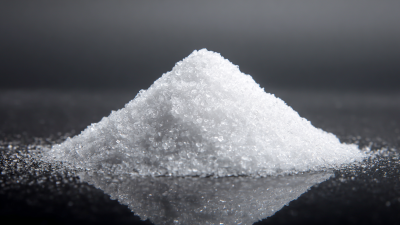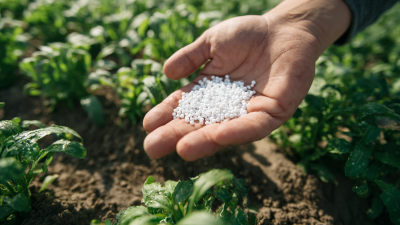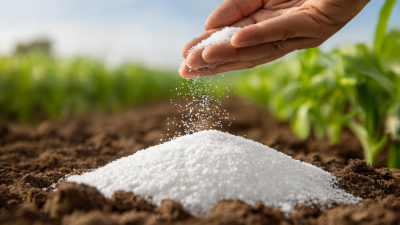Potassium Nitrate, a vital compound in the world of agriculture, is increasingly recognized for its role in enhancing plant growth and improving crop yields. In 2025, the application of this powerful nutrient is more crucial than ever, as farmers and gardeners alike strive to meet the growing global demand for food. Understanding how to effectively use Potassium Nitrate can lead to healthier plants, bountiful harvests, and sustainable practices that support both economic viability and environmental responsibility.
This guide explores the best practices for utilizing Potassium Nitrate to achieve optimal results in various agricultural settings. From traditional farming methods to modern hydroponics, we will delve into the science behind this essential nutrient and its impact on plant health. By integrating Potassium Nitrate into your fertilization strategy, you will not only boost plant vitality but also enhance the overall efficiency of your crop production.
As we move towards a future that prioritizes sustainable agriculture and high-quality yields, the importance of Potassium Nitrate cannot be overstated. This introduction sets the stage for a comprehensive discussion on how to harness its full potential, enabling farmers and horticulturists to maximize their results while promoting responsible stewardship of our natural resources.

Potassium nitrate, often referred to as KN03, is a vital nutrient that plays a crucial role in the growth and development of plants. This compound provides essential potassium and nitrogen, two key macronutrients that influence various physiological processes within plants. Potassium is fundamental for regulating water uptake, enzyme activation, and photosynthesis, while nitrogen is a core component of amino acids and proteins, directly impacting plant metabolism and growth rates.
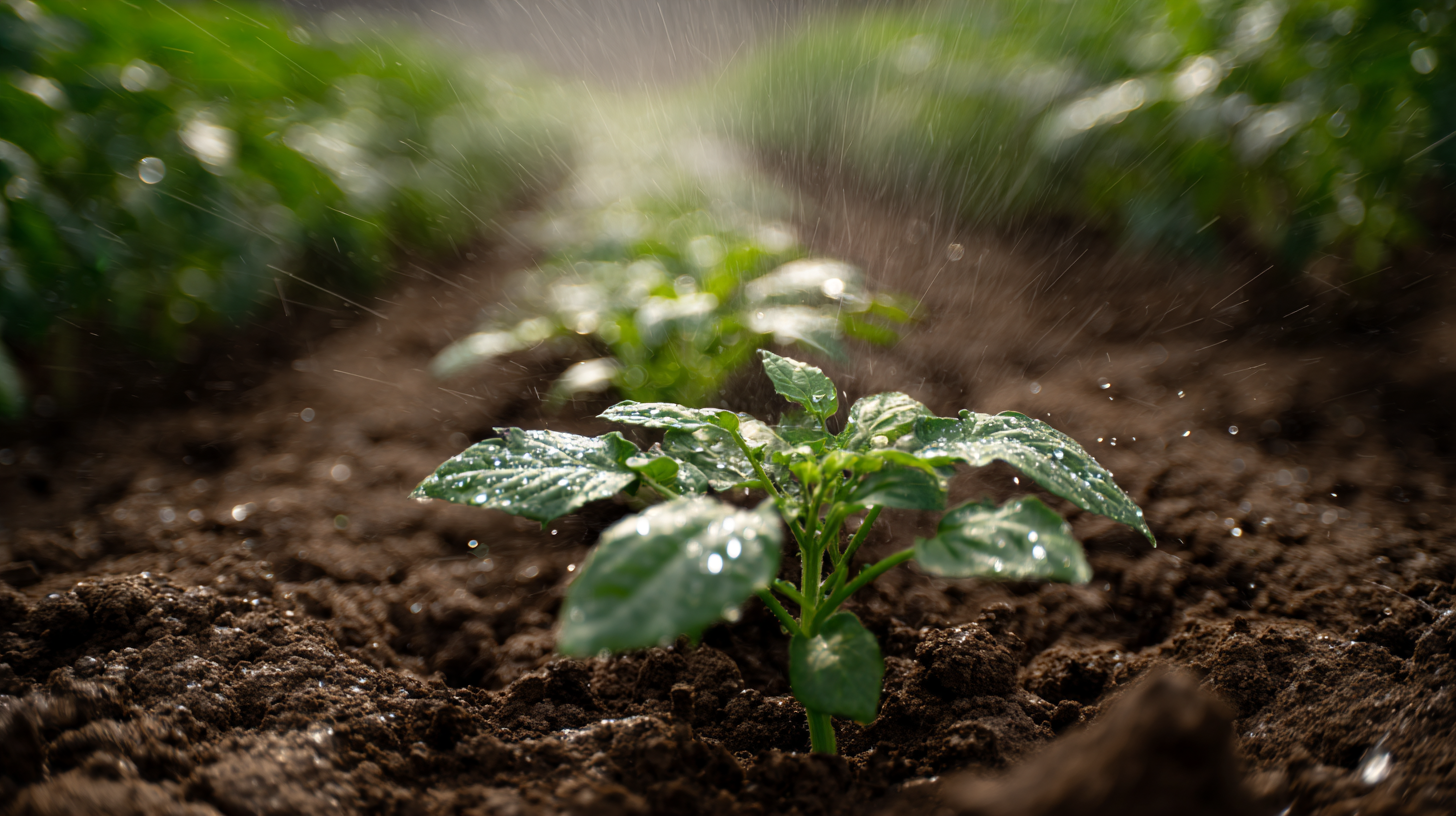
When utilized correctly, potassium nitrate can significantly enhance crop yield and overall plant health. It helps in improving root development, flowering, and fruit quality. Farmers can apply potassium nitrate through soil amendments or foliar sprays, with optimal timing depending on the specific crop cycle. Regular monitoring of soil nutrient levels is necessary to ensure that plants receive adequate potassium and nitrogen without risking nutrient imbalances or environmental damage. Implementing potassium nitrate as part of a well-balanced fertilization strategy can lead to healthier crops and increased agricultural productivity.
When considering the optimal application rates of potassium nitrate for various crop types, it is crucial to recognize its synergistic effects when combined with other nutrients. For example, recent research highlighted that the combination of ammonium and potassium significantly improved carrot growth and water use efficiency. This indicates that a tailored nutrient approach, integrating potassium nitrate with other fertilizers, can enhance overall crop performance.
Different crops benefit from varying application rates of potassium nitrate based on their specific growth requirements. For instance, studies focused on sesame cultivation have demonstrated that the synergy between urea and potassium nitrate can lead to increased growth and yield, making it clear that understanding the nutrient needs of each crop type is essential for maximizing agricultural output. Similarly, optimizing potassium fertilization in potatoes has been shown to boost both yield and quality, underscoring the importance of potassium in crop management strategies. By focusing on these relationships, farmers can better enhance their crops' growth and maximize yield potentials.
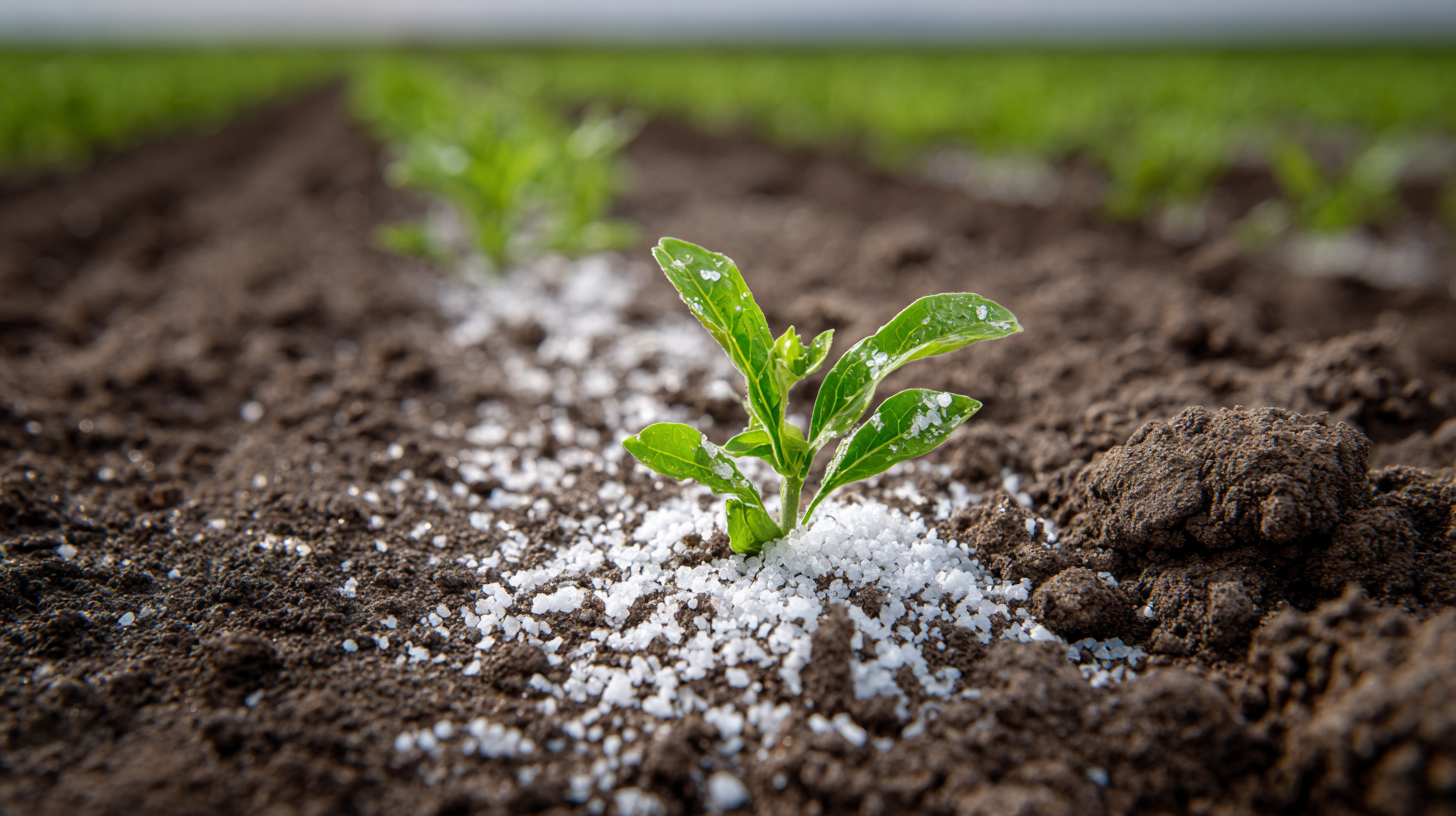
Potassium nitrate, a crucial source of both potassium and nitrogen, plays a significant role in enhancing plant growth and improving crop yield. One of the key benefits of potassium nitrate is its impact on soil pH levels. When applied to the soil, potassium nitrate can help neutralize excessive acidity or alkalinity, creating an optimal environment for nutrient uptake. This balance is vital for the growth of various crops, as it enables plants to access critical nutrients more efficiently.
In addition to adjusting soil pH, potassium nitrate enhances nutrient availability, particularly for macronutrients essential for plant health. By promoting optimal conditions in the rhizosphere, it helps in the solubility of other vital nutrients such as phosphorus and magnesium. The presence of nitrate encourages root development and microbial activity, which further aids in nutrient mobilization. As a result, crops benefit from improved nutrient absorption, leading to healthier plants and increased yields. Utilizing potassium nitrate in a strategic manner can thus be a game-changer for farmers aiming to maximize the productivity of their land.
The timing of potassium nitrate (KNO3) application is crucial for maximizing crop yield. According to the International Fertilizer Association, applying potassium nitrate during the early growth stages can significantly enhance nutrient uptake, which is essential for root development and overall plant vigor. Studies have shown that when applied at the correct growth stage, potassium nitrate can increase crop yields by up to 15% compared to those that receive no potassium supplementation.
 Research from the Journal of Agricultural Science indicates that a split application approach, where potassium nitrate is applied at both the planting stage and during critical growth periods, yields the best results. This method allows for the sustained supply of potassium and nitrate during peak growth phases, which is vital in meeting the high nutrient demands of crops. Additionally, applying potassium nitrate ahead of flowering can help boost fruit set and quality, further contributing to a higher overall yield.
Research from the Journal of Agricultural Science indicates that a split application approach, where potassium nitrate is applied at both the planting stage and during critical growth periods, yields the best results. This method allows for the sustained supply of potassium and nitrate during peak growth phases, which is vital in meeting the high nutrient demands of crops. Additionally, applying potassium nitrate ahead of flowering can help boost fruit set and quality, further contributing to a higher overall yield.
Adhering to these timing strategies can optimize the benefits of potassium nitrate, ultimately leading to more productive and profitable farming practices.
Potassium nitrate (KNO3) is a widely used fertilizer known for its high solubility and immediate availability of nutrients to plants. When comparing potassium nitrate with other fertilizers, such as urea or ammonium nitrate, it becomes evident that KNO3 provides a dual benefit: a source of potassium, which is crucial for fruit and flower development, and nitrogen, promoting vegetative growth. Studies have shown that when potassium nitrate is applied, crops often exhibit enhanced growth rates and improved resistance to diseases and environmental stresses compared to traditional urea-based fertilizers, which solely offer nitrogen.
Moreover, the unique ion composition of potassium nitrate contributes to better nutrient uptake efficiency. Unlike ammonium-based fertilizers, which can lead to soil acidification and nutrient leaching, potassium nitrate helps maintain a balanced pH level in the soil, promoting a healthier root environment. Crops treated with KNO3 not only display higher yields but also demonstrate superior quality in terms of flavor and nutritional content. This comparative advantage makes potassium nitrate a preferred choice for farmers aiming to achieve optimal crop growth while minimizing environmental impact.
| Fertilizer Type | Main Nutrients | Application Rate (kg/ha) | Effect on Crop Yield (%) | Cost ($/kg) |
|---|---|---|---|---|
| Potassium Nitrate | K, N | 250 | 20 | 0.90 |
| Urea | N | 300 | 15 | 0.50 |
| Ammonium Nitrate | N | 250 | 18 | 0.70 |
| Calcium Nitrate | Ca, N | 200 | 17 | 1.00 |
| NPK Fertilizer | N, P, K | 400 | 12 | 0.60 |
